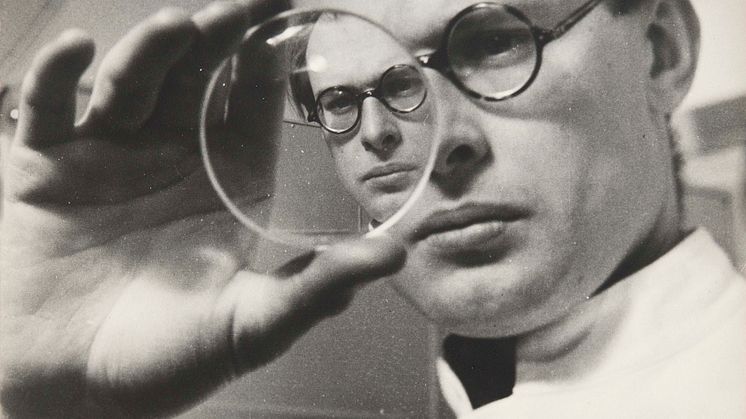
Press release -
New acquisition: Portraits by Kerstin Bernhard
Nationalmuseum
has acquired a selection of photographic portraits by Kerstin Bernhard for the Swedish
National Portrait Gallery. The portraits have been donated by Carl Johan
Bernhard, the photographer’s nephew and assistant. One of the most prominent
Swedish photographers of the 20th century, Kerstin Bernhard would have been 100
years old this year.
Kerstin Bernhard (1914–2004), best known for her fashion and food photography, would have turned 100 on 27 August this year. Bernhard started out as a portrait photographer with her own studio, so Nationalmuseum is delighted to have acquired some of her most important portraits for the Swedish National Portrait Gallery.
The majority of the acquired works date from Bernhard’s early career in the 1930s and ’40s, when she was trying to strike a balance between personal expression and the conventions of the time. The award-winning 1939 portrait of the photographer’s brother, Dr Carl Gustaf Bernhard, shows him at work as an optical neurophysiologist. In this piece, Kerstin Bernhard displays creativity, humour, and a documentary aspect that was a break with convention.
However, the photograph of her sister-in-law Gurli Lemon-Bernhard, taken the same year, follows the standard portrait template for stars of the performing arts. The subject is portrayed in the role of the page in Mozart’s Marriage of Figaro. Kerstin Bernhard was commissioned by the magazine Idun to take this photograph as the first in a series of portraits of famous stage and screen personalities. The actor Lars Hanson is seen in another costumed portrait, believed to show him in the role of King Herod in the Royal Dramatic Theatre’s 1945 production of An Idealist by Kaj Munck. The staging reflects the studio tradition of dramatic lighting, with a close-up of the subject’s face in sharp contrast – a look reminiscent of publicity stills for feature films.
A portrait of an unknown woman with downcast eyes is an example of a work in the studio tradition that is typical of its time, closely resembling the stereotypical image of women as sweet, passive and introverted. Over time, the creatively minded Kerstin Bernhard lost interest in standard portraits. After the Second World War, when the borders reopened and she was again able to travel to other parts of Europe, she shifted her focus.
This generous donation by Carl Johan Bernhard, Kerstin Bernhard’s nephew and assistant, enhances the Swedish National Portrait Gallery with a selection of works by one of the most prominent Swedish photographers of the 20th century. Nationalmuseum has no budget of its own for new acquisitions, but relies on gifting and financial support from private funds and foundations to enhance its collections of fine art and craft.
Further information
Eva-Lena Karlsson,
curator, Collections and Swedish National Portrait Gallery, eva-lena.karlsson@nationalmuseum.se, +46 8 5195 4430
Hanna Tottmar, press officer, hanna.tottmar@nationalmuseum.se, +46 767 23 46 32
Caption
Kerstin Bernhard, Carl
Gustaf Bernhard, 1939.
Categories
Nationalmuseum is Sweden’s premier museum of art and design. The collections comprise older paintings, sculpture, drawings and graphic art, and applied art and design up to the present day. The museum building is currently under renovation and scheduled to open again in 2017. In the meantime, the museum will continue its activities through collaborations, touring exhibitions and a temporary venue at the Royal Swedish Academy of Fine Arts, Fredsgatan 12, Stockholm. Nationalmuseum collaborates with Svenska Dagbladet, Fältman & Malmén and Grand Hôtel Stockholm. For more information visit www.nationalmuseum.se.

